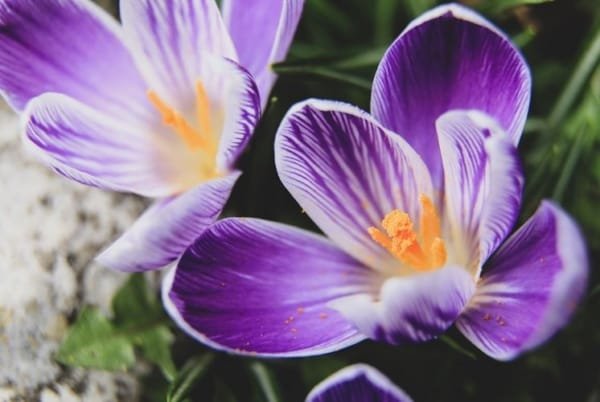 How to Use Saffron for Coloring: Key Tips
How to Use Saffron for Coloring: Key Tips
If you’re new to cooking or want to learn the secrets of using saffron to create rich, vibrant colors in your dishes, stay with us in this guide.
Saffron is considered one of the most valuable spices worldwide due to its pleasant aroma, beautiful golden color, and numerous health benefits. This plant belongs to the lily family, and its harvesting process is complex due to the specific geographic areas and environments in which it needs to grow. These challenges contribute to its scarcity and high value.
In cooking, saffron is used as a natural colorant that can transform dishes into something both visually appealing and delicious. Additionally, saffron contains antioxidants that promote bodily health and can combat oxidative damage. It also has anti-inflammatory and antiseptic properties.
Saffron’s Role in Cooking
Some famous dishes using saffron as a coloring agent include saffron rice, seafood dishes, and special desserts. Saffron is also used in both hot and cold beverages. From its visual effects to the unique flavor and fragrance it imparts to food, saffron creates a distinct culinary experience.
The Science Behind Saffron’s Coloring Effect
Saffron’s color properties come from natural compounds, crocin, and picrocrocin, which dissolve in water and impart a yellowish to reddish tint to food or drinks. Since saffron is all-natural and pure, it is a preferable alternative to artificial food colorants. In addition to its visual appeal, saffron adds a rich, fragrant flavor to foods. By adjusting the quantity of saffron and how it is combined with other ingredients, you can achieve the desired color and taste.
Using Plant Oils for Better Saffron Coloring
Plant oils, such as olive oil, coconut oil, and sunflower oil, are effective in enhancing the saffron coloring process. To use oil for saffron coloring, follow these steps:
- First, soak saffron in warm water until the flavor and color are extracted.
- Next, add a small amount of plant oil, such as olive oil, to the mixture.
- Mix the saffron and oil solution into your dish to enhance the color.
- Experiment with different oils to find the best result for your dish.
Using oils helps boost the solubility and effectiveness of saffron in cooking.
Grinding Saffron for More Intense Color
Grinding saffron with ingredients like sugar or salt increases its coloring potential. The process breaks down the saffron into a finer powder, allowing it to better mix and distribute in dishes, improving both the color and flavor.
Adding Acidic Ingredients for Enhanced Saffron Color
Acidic ingredients like lemon juice or citric acid help increase the solubility of saffron’s active coloring compounds. This not only enhances saffron’s color effect but can also boost the flavor of the dish. To use this method, simply soak saffron in lemon juice or any other acidic substance before adding it to your recipe.
Enhancing Saffron Color with Plant-Based Compounds
Certain plant compounds, like ginger, cinnamon, and red pepper, can improve saffron’s color when combined. These naturally colored compounds complement saffron’s golden hue, intensifying its impact when mixed in the dish.
Ideal Methods for Steeping Saffron
To improve saffron’s color, aroma, and taste when preparing it, follow these steps:
- Soak saffron in warm water or a drop of plant oil.
- Use hot water (around 80–90°C) but avoid boiling water to preserve saffron’s pigments.
- Steep saffron for no more than 5 minutes to avoid overextraction.
- Use about 5-7 milligrams of saffron per cup of water.
- Utilize a glass teapot to brew the saffron mixture.
Why Saffron Doesn’t Always Color Properly?
- Poor quality saffron
- Improper drying process
- Incorrect storage methods
- Insufficient quantity of saffron
- The cooking method may interfere with saffron’s ability to color
- Oxidation factors
- Combining saffron with other ingredients improperly
Important Key Notes about Saffron’s Coloring Process
To ensure optimal results, follow these essential tips:
- Always use fresh and high-quality saffron to maximize color extraction.
- Experiment with mixing saffron with both acidic ingredients and plant oils for enhanced effect.
- Grind saffron to a powder for better distribution and coloring power.
Summary of Tips for Perfecting Saffron’s Coloring Effect
Saffron can beautifully color your dishes while providing a unique flavor. Using plant oils, grinding saffron, and adding acidic ingredients are all effective methods to boost its performance as a colorant. Ensure you’re using high-quality saffron and adjust the quantity for your specific needs. This way, you can elevate the visual appeal and flavor of any dish, from rice to desserts.
Now you have all the essential knowledge to make the most out of saffron’s coloring properties in your kitchen. Enjoy experimenting with this magnificent spice!







Get Social